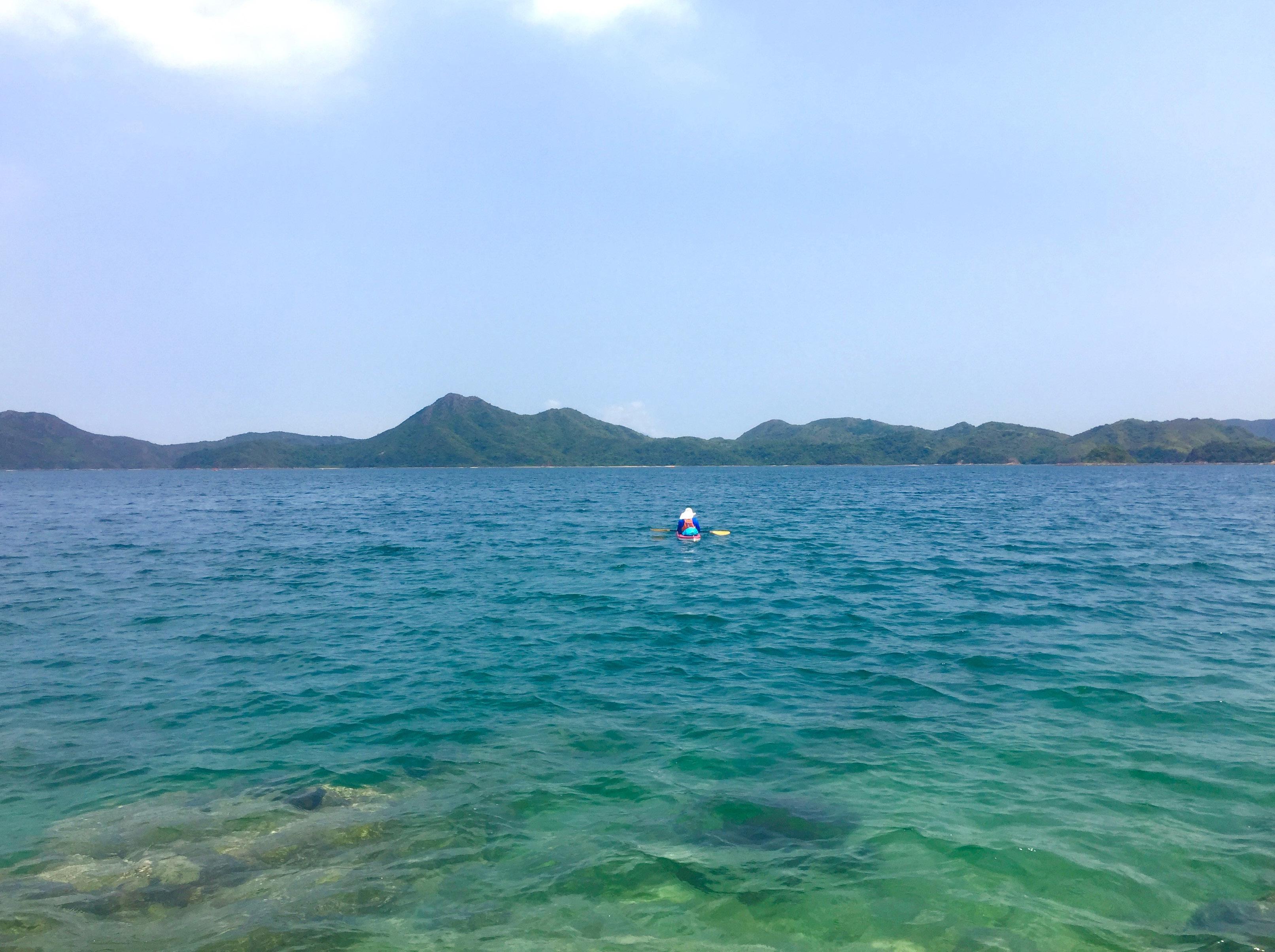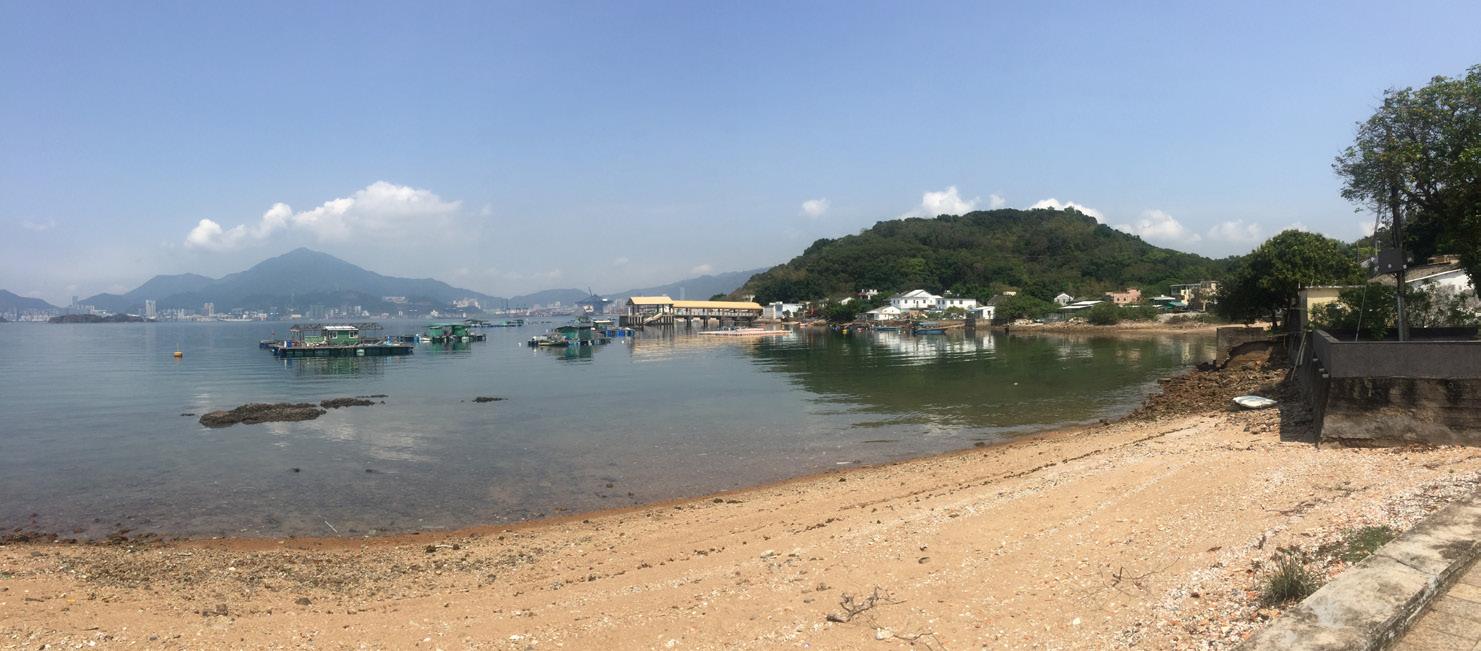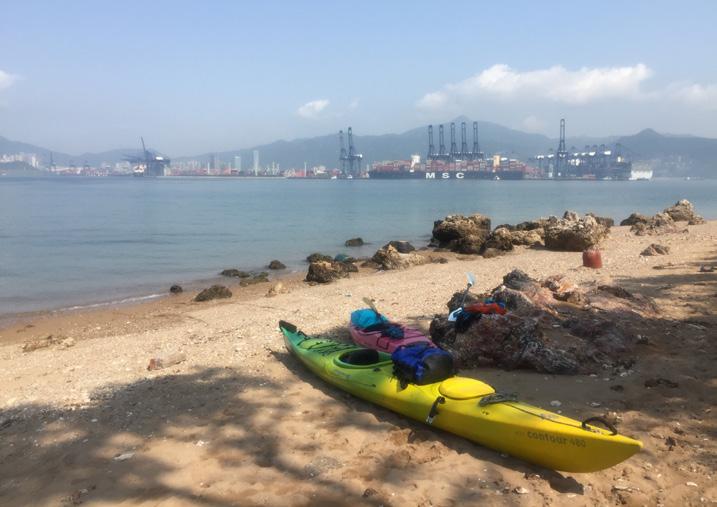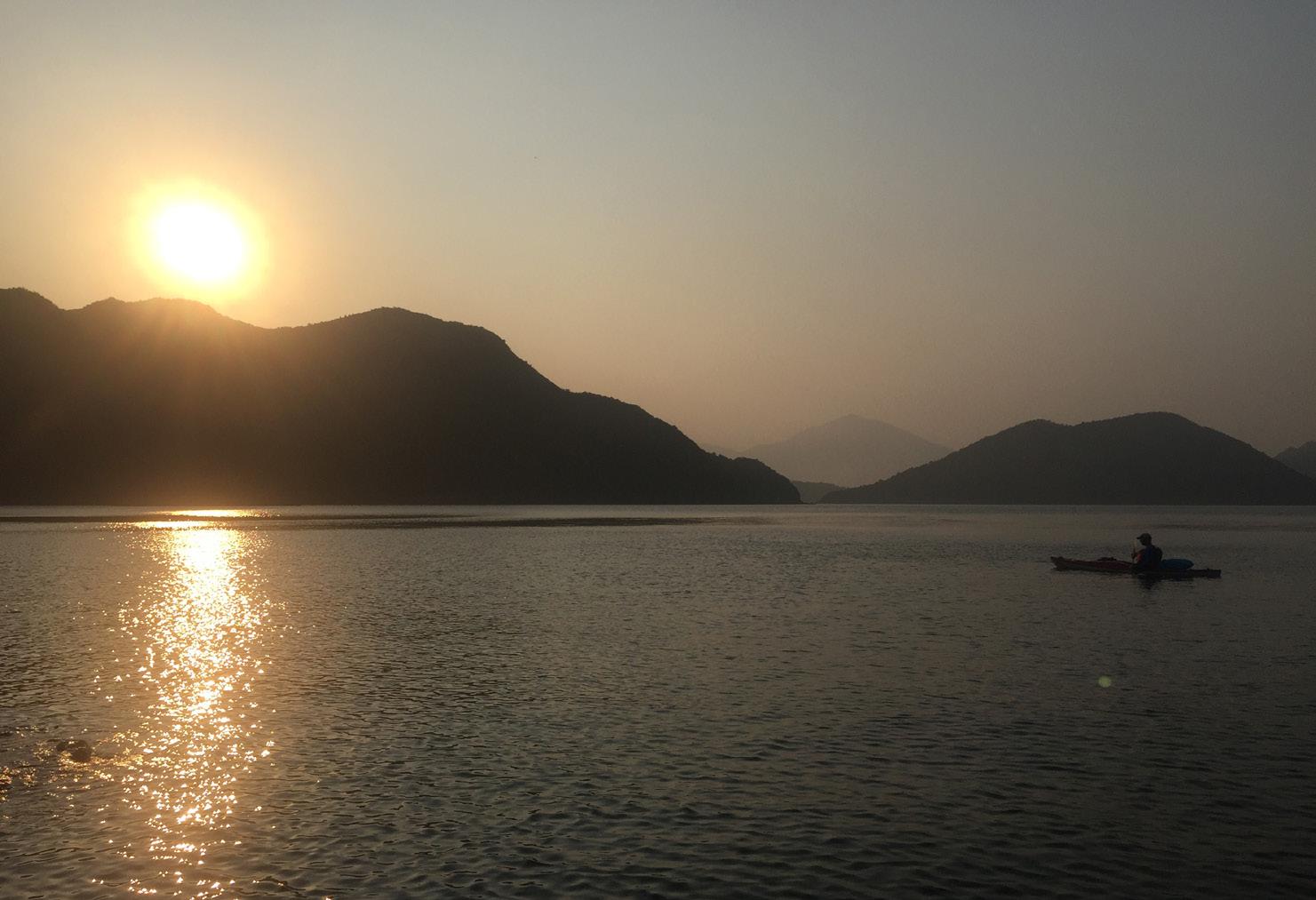
3 minute read
BIG DAY OUT
Rory Mackay visits the farflung northeastern corner of the New Territories
By any nations’ standards, Double Haven would be considered a remote and relatively pristine location. It’s far-flung northeastern location in the New Territories makes it all the more special. The area possesses a little bit of something for everyone; from family-friendly short walks and historical rekeys, to tranquil beaches and clear waters.
Advertisement
The primary port of call for all that reach the four main islands of Double Haven, is the sleepy village of Kat O. Located on Crooked Island, it is the only major settlement of note in the area and one could easily spend the best part of an hour wandering the laneways; crumbling Hakka houses interspersed with shade yielding Banyans.
Enjoy a waterfront stroll and keep an eye

out for the three 19th century era cannons, aptly pointed northwards towards the large container port of Yantian. Often visible, this behemoth on the Chinese Mainland provides a compelling juxtaposition between the traditional ways of the Hakka people and the
How to get there
Getting to the island is not straight forward, but that’s what makes it all the more alluring. The most common way is by a ferry from Shau Tau Kok to Kat O, however as this falls within the Closed Border Area, an access permit is required. Alternatively, you can join a private island tour to charter a boat or get a water taxi from Wong Shek Pier. From Sai Kung take the number 94 and 96R KMB buses go to Wong Shek Pier (96R operates on weekends only). For the more intrepid, one can sail or kayak to the region and utilise many of the secluded anchorages the archipelago has to offer.
Jellyfish rise of Modern China across the waters.
From Kat O, there are a few short hikes you can pursue across opposite ends of Crooked Island; the most worthwhile being a shorter trail leading northeast across to a large sandy beach which has spectacular views of Mirs Bay. Make sure to indulge yourself with a decent meal and grab refreshments in Kat O, as there are no such amenities anywhere else. If you have your own boat or kayak, then Kat O


serves as a worthy port of call before venturing to more remote areas of the archipelago.
For those who are not so fussed about the logistics of venturing offshore and are happy to get a taster for the area, another option is to visit the coastal portion of Double Haven near Lai Chi Wo Village.
One can reach Lai Chi Wo overland by hiking from Wu Kau Tang in Plover Cove Country Park (take green minibus 20R departing at Tai Po Market MTR station to Wu Kau Tang), or by taking a ferry (Sunday and Public Holidays only) from Sha Tin (depart from Ma Liu Shui: 9am. Depart from Lai Chi Wo: 15.30pm. Fare: $50 single ticket, $80 return ticket).
The hike from Wu Kau Tang takes you in an Easterly direction over a pass with fantastic views over the entire Double Haven area, before descending to the coast. Venturing further afield, there are many trails in Plover Cove Country park to choose from. If you’re
Sunset over the water
taking the ferry from Ma Liu Shui, enjoy the views of Tolo Harbour en route before rounding the headland. Be sure to catch the final boat leaving the island at 3.30pm, unless hiking back or camping overnight is more your cup of tea. Camping in Hong Kong can be an awesome experience; there are a few great options around Plover Cove Country Park, the ‘Sam A Chung’ campsite being the best situated of them. Among the list of Hong Kong’s many regions, the castaway islands of Double Haven are worth the trip at least once. The adventure to and from Double Haven is as much an attraction as being there.

Rory Mackay runs adventure company Wild Hong Kong. For more details visit
wildhongkong.com









